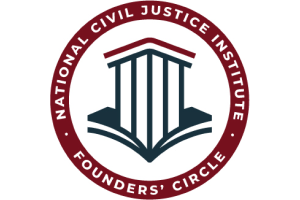Client Reviews
Scaffolding Accidents
A safe workplace is a right that far too many construction workers are denied.
Every year, millions of American construction workers work on wood or steel scaffolding. And every year, 4,500 employees are injured and 50 to 100 are killed as a result of scaffolding accidents, according to the Occupational Safety and Health Administration.
At Associates and Bruce L. Scheiner, Attorneys for the Injured, our experienced construction accident attorneys understand these scaffolding incidents are largely preventable.
Scaffolding is a temporary, elevated work space which must be carefully constructed, maintained, inspected and dismantled to ensure worker safety. Many different types of professional workers use scaffolding, including painters, window washers, bricklayers, carpenters and many more. In 72 percent of all scaffolding accidents, the Bureau of Labor Statistics reports injuries and fatalities are attributed to:
- Planking giving way, typically due to overloading
- Worker slipping and falling from elevation
- Worker being struck by an object, such as debris or falling tools
- Scaffolding collapse, typically caused by instability of overloading
Electrocution is another serious hazard workers on scaffolds sometimes face.
Scaffolding injuries can vary depending on the type of accident, but some potential injuries include:
- Bruising and lacerations
- Broken bones
- Back and neck injuries
- Spinal cord injuries
- Head injuries
- Traumatic brain injuries
- Death
Ample research on scaffolding safety has allowed us to develop a strong understanding of what must be done to prevent scaffolding accidents. Yet they continue to occur.
Preventing Scaffolding Accidents
Prevention of scaffolding accidents involves following OSHA regulations with regard to construction and inspection, specifically ensuring a “competent person” oversees the process at each stage. It’s also imperative to pay particular attention to those areas known to be high problem.
Scaffolding Falls
Scaffold falls can occur when workers are climbing on or off scaffold, while working on unguarded scaffold platforms or when scaffold platforms or planks fail (i.e., equipment failure).
The type of scaffolding and work being performed will dictate precautions necessary, but in general, use of guardrails and personal fall arrest systems can prevent serious injury. It is the law for workers toiling at 10 feet or higher to be protected by at least one or the other, and in some cases both are mandated.
Guardrails need to be installed along all open sides and ends. Specific requirements exist for the installation of railing along the front edge, as well as top rails, midrails and toeboards.
Personal fall arrest systems need to adhere to OSHA standards as set forth in 1926.502(b). They also must be attached by lanyard to a horizontal lifeline, a vertical lifeline or a scaffold structural member.
Falling Object Injuries on Scaffolding
When work on a construction site is being carried out at multiple vertical levels, the risk of a worker being struck by an object from above is a major concern – especially for a worker on a temporary scaffolding structure. So too is the risk of a worker dropping an object while working at these heights.
Preventing struck-by injuries involves providing workers with hard hats, barricading the area below scaffolding to bar entry, using panels or screens if materials are stacked higher than the toe bar and erecting a canopy or netting under the scaffold that can catch or deflect falling objects.
Electrocution on Scaffolding
Workers on scaffolds are sometimes perilously close to overhead power lines. The scaffolds need to be far enough away that neither the scaffolding itself nor any conductive materials (paint roller extension poles, scaffold components, building materials, etc.) come within 10 feet of power lines.
The only exception would be insulated power lines wherein there is less than 300 volts. In those cases, the distance can be 3 feet. If the voltage or insulation status isn’t known, the 10-foot rule is to be followed.
Scaffold Collapse Injuries
Scaffolds can collapse when there is structural instability, which can result from a number of causes.
Employers must make sure scaffolds are built within OSHA standards pertaining to structural integrity and strength. That means the structure needs to be able to bear four times the stated load. There also needs to be proper access restriction both to and from the scaffolding and from one ramp or walkway to another. The structure must also be fully and properly planked, with large overlap of planks and only small gaps between those that do not overlap. The height should be no higher than four times the minimum base dimension.
Employers, General Contractors and Site Owners Responsibility
Workers must be trained on proper scaffold work techniques, and this is ultimately the responsibility of the employer or others in charge of the site. Even if workers have already been trained, employers and others with on-site control must provide retraining anytime inadequacies are observed or when changes in the worksite demand it.
Cutting corners with training or appropriate construction or inspection with scaffolds will almost certainly result in worker injury. Our experienced legal team is here to assist workers in weighing all of their legal options for compensation.
Contact Associates and Bruce L. Scheiner, Attorneys for the Injured, for a free and confidential consultation to discuss your rights. There are no fees or costs unless we win. Offices in Fort Myers, Cape Coral, Naples and Port Charlotte.
Call 800-646-1210 for a Free Consultation












